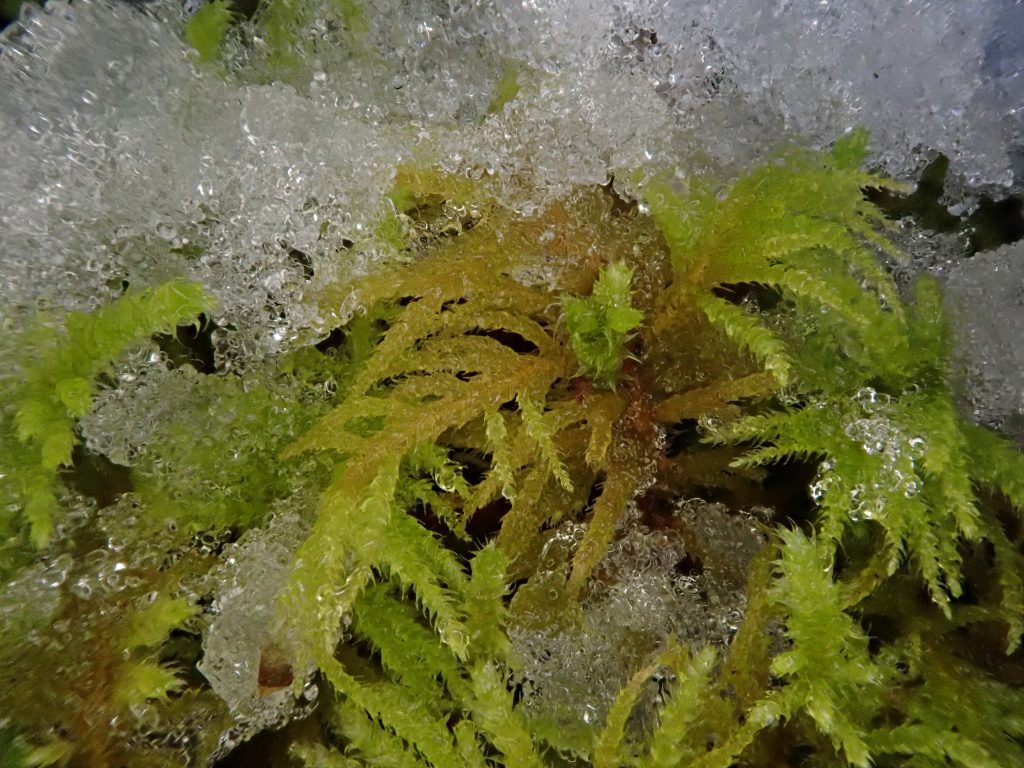
Kindbergia oregana is a very common forest floor moss west of the Cascades in coniferous and mixed woodlands. It forms deep and sometimes very large mats in some locations.
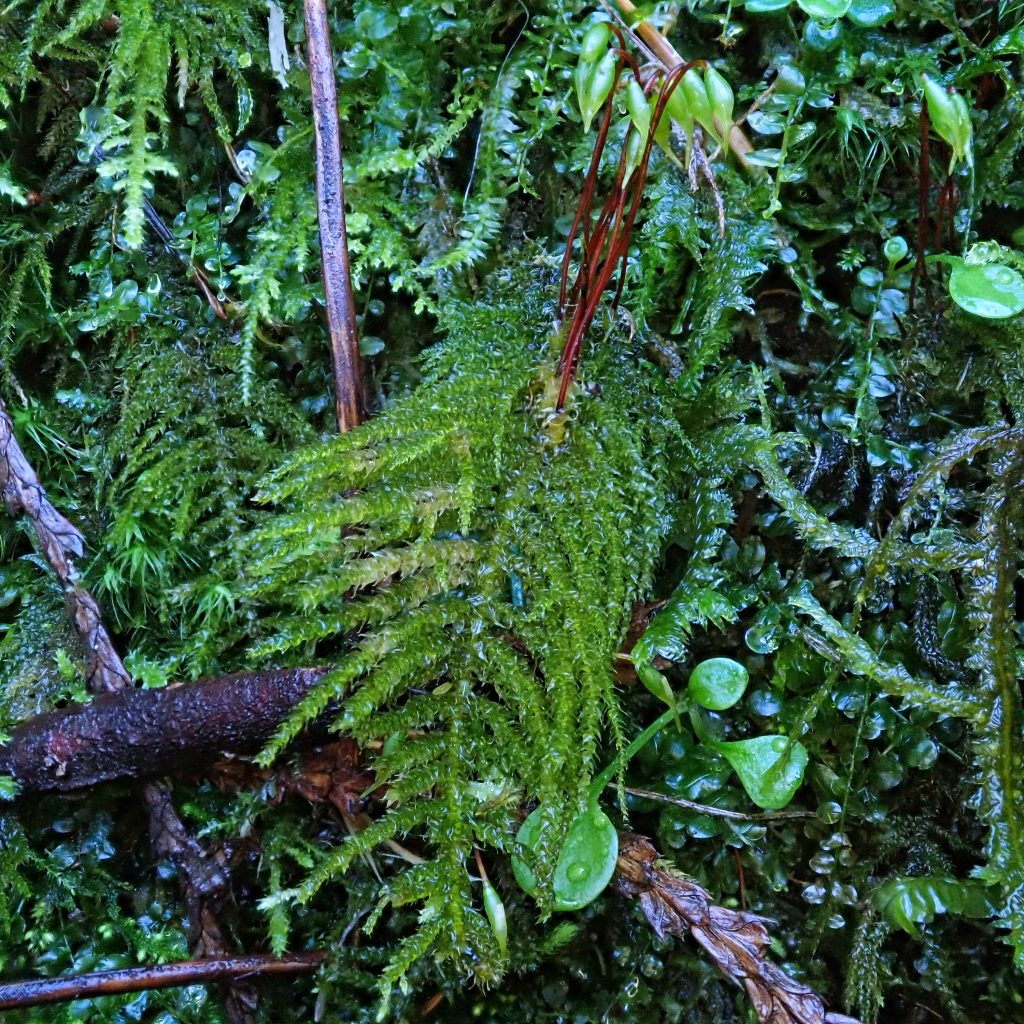
It flourishes in a wide variety of damp, shady environments, and can be abundant in tree farm settings where the ‘crop’ is planted so closely together as to shade out vascular plants.
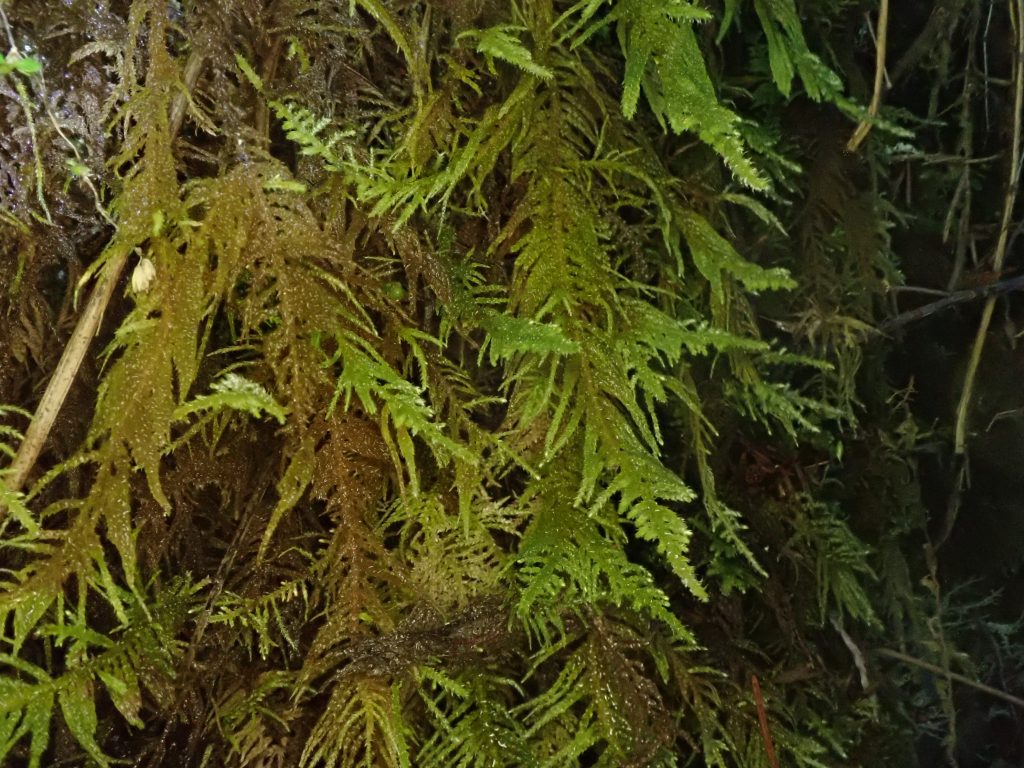
Kindbergia oregana provides important habitat for a wide variety of desiccation sensitive invertebrate. Some of them, like nematodes (roundworms), tardigrades(water bears), and bdelloid rotifers can enter a dormant state called anhydrobiosis where they retain life during extreme desiccation, but the relative humidity must be high as they dry out for the process to work. Kindbergia oregana, as well as many other mat forming mosses, provide such an environment as they undergo their own drying out.
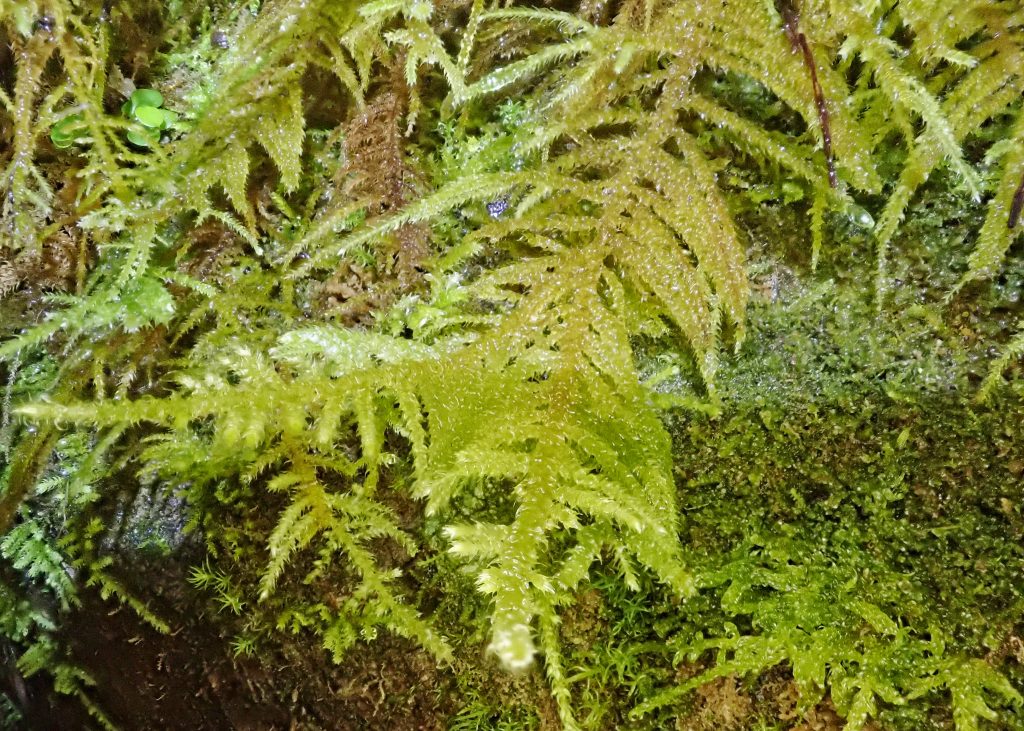
Some of the nematodes and tardigrades which live within this shelter eat the moss itself, while others feed on invertebrates or bacteria. Many mites also live here, most of them feeding on fungi and algae, as do many of the terrestrial amphipods in our region.
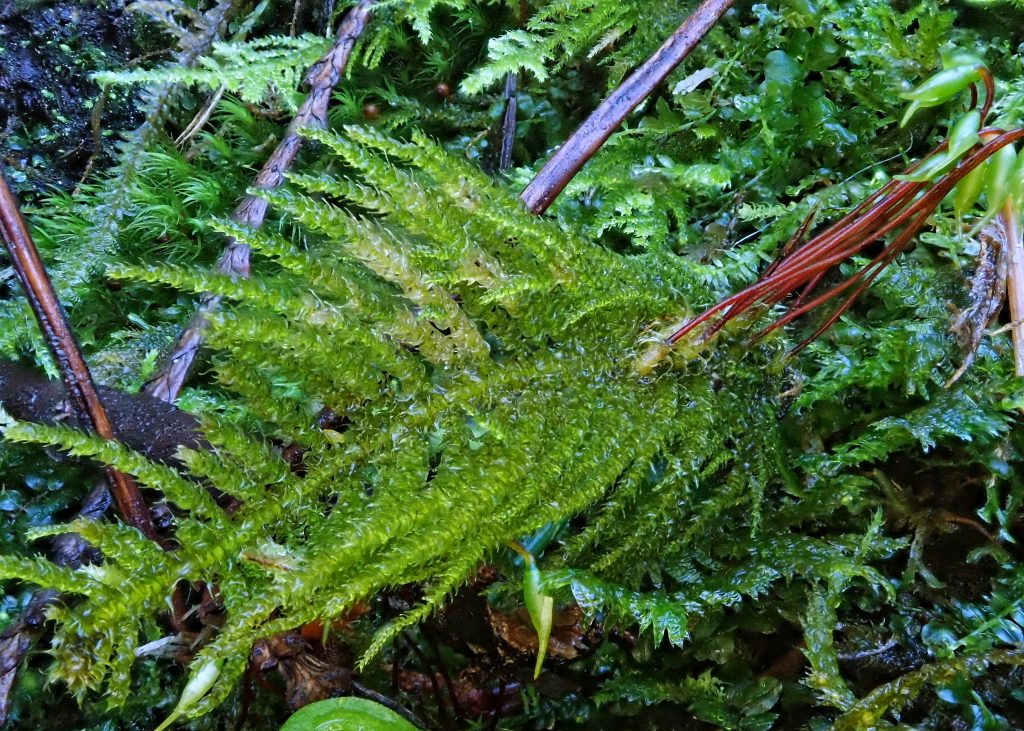
And not only does it also provide shelter for larger invertebrates and arthropods, and food and cover for some vertebrates, it also helps control erosion of the soil and humus of the forest floor, and enables that substrate to retain the moisture necessary for the germination of seeds. Kindbergia oregana is a vital component of a healthy forest ecosystem in our region.
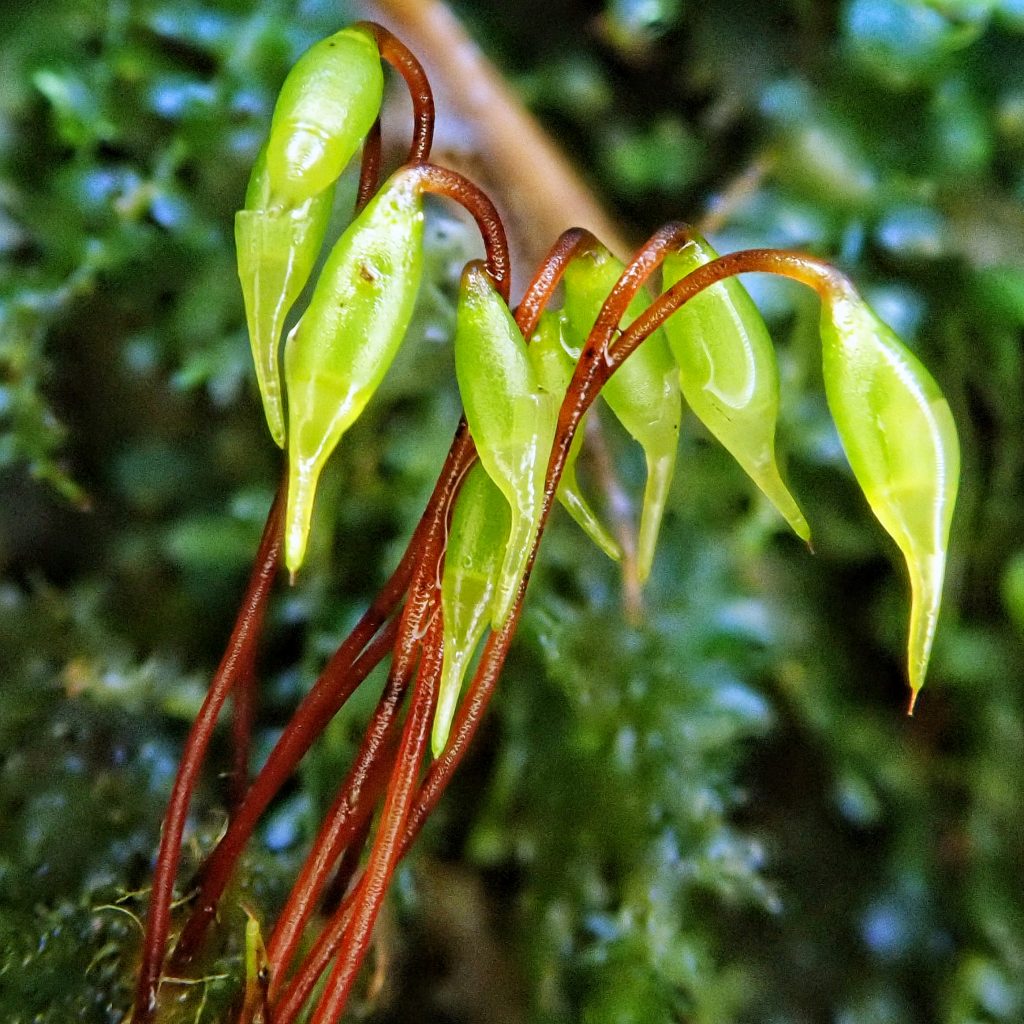
Description-This is a large, yellow green to green, mostly prostrate, pleurocarpous feather moss with long, simply pinnate branches occurring in a single plane; leaves are plicate (wrinkled), decurrent and clasping the stem, then angling away from it, with serrate margins, a single costa, and narrowing abruptly to a point; branch leaves usually 1mm, ovate to heart shaped; stem leaves up to 2mm, ovate and falcate (hooked at the tip); capsules are nodding, and have a large beak (rostrate calyptra) and rough stalk.
Similar species– Kindbergia praelonga is more spindly, with smaller leaves and multiple, arching branches of the main stem; most other pinnate pleurocarps have larger leaves.
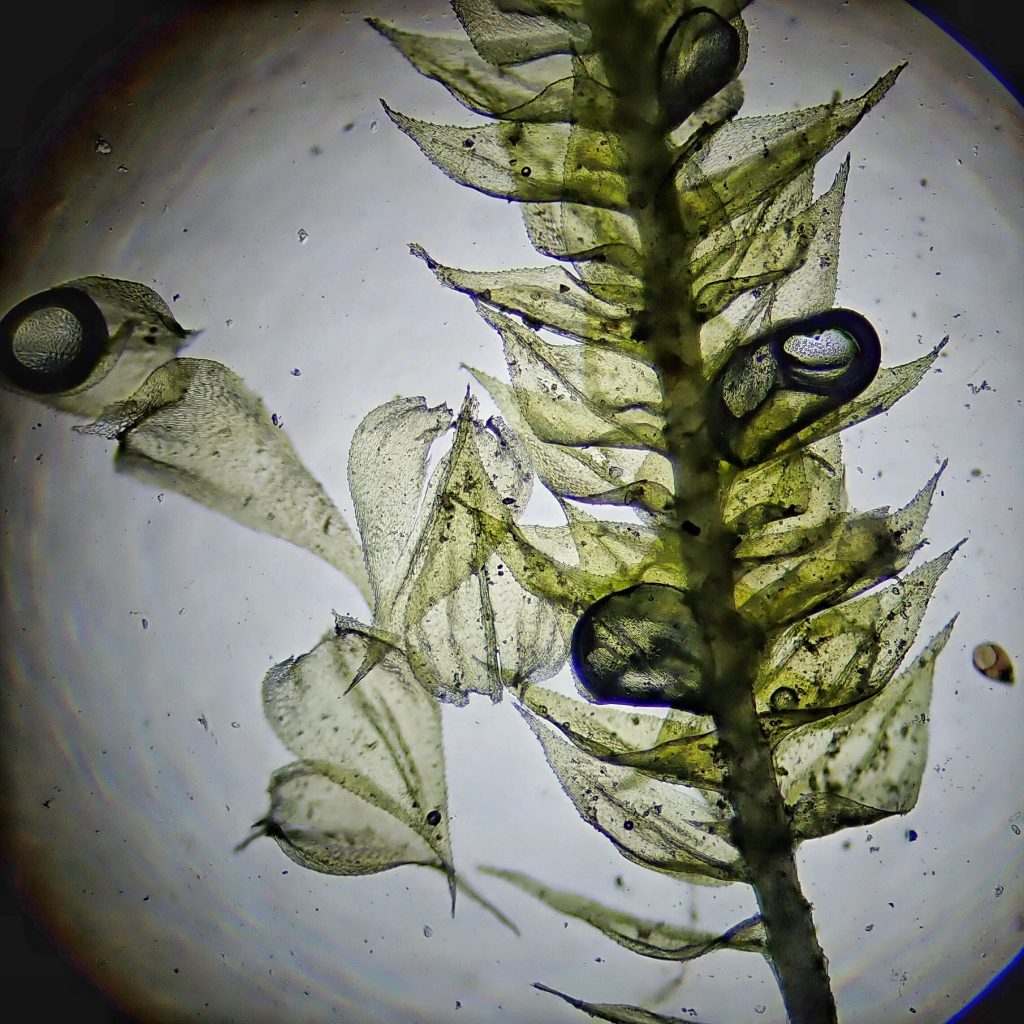
Habitat-On soil, logs, lower trunks of trees, and soil over rock, in wet to mesic conifer and mixed forests, up to 4000’.
Range– Northwestern North America; primarily west of the Cascades in our region; also with populations in north Idaho and nw Montana
Reproductive timing– Late winter into spring and summer
Eaten by– Slugs, mice, and voles are known to graze the capsules of this species.
Etymology of names–Kindbergia honors Nils Conrad Kindberg (1832-1910), a noted Swedish bryologist during the last half of the 19th century. The specific epithet oregana refers to the location of the first specimens described, although by oreganum W. S. Sullivant meant the Oregon Territory.
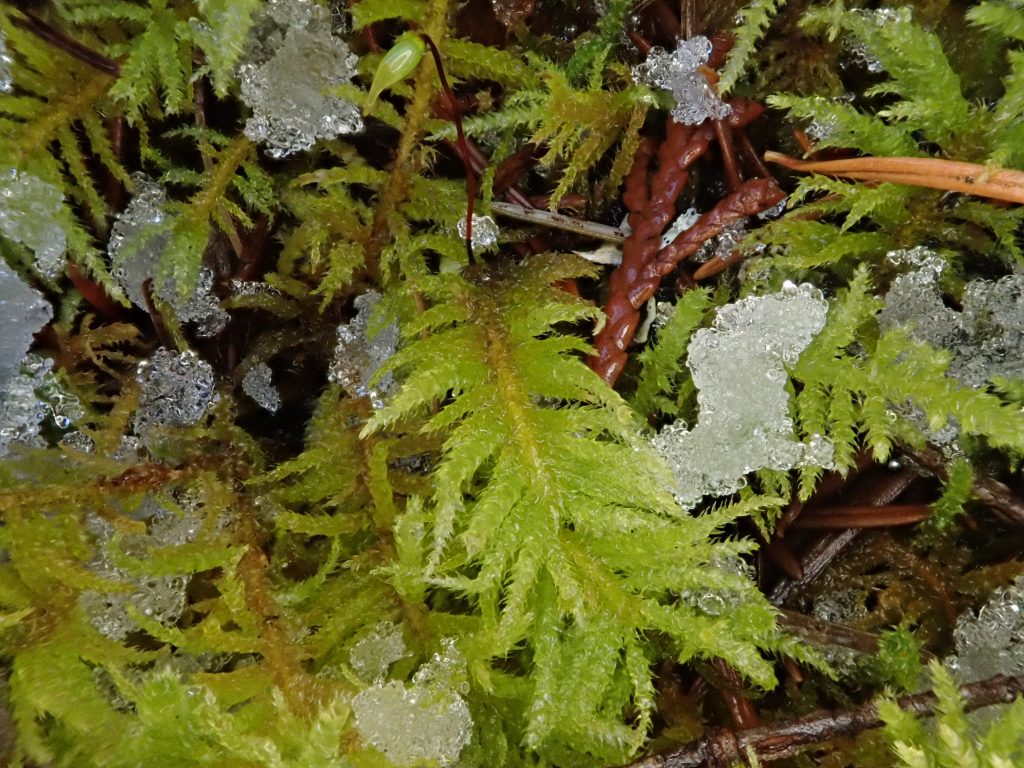
http://beta.floranorthamerica.org/Kindbergia_oregana
https://ucjeps.berkeley.edu/cgi-bin/get_moss_treatment.pl?taxon=Kindbergia%20oregana
http://fieldguide.mt.gov/speciesDetail.aspx?elcode=NBMUS2U0C0
https://www.centralcoastbiodiversity.org/oregon-beaked-moss-bull-kindbergia-oregana.html
https://www.jstor.org/stable/3244525
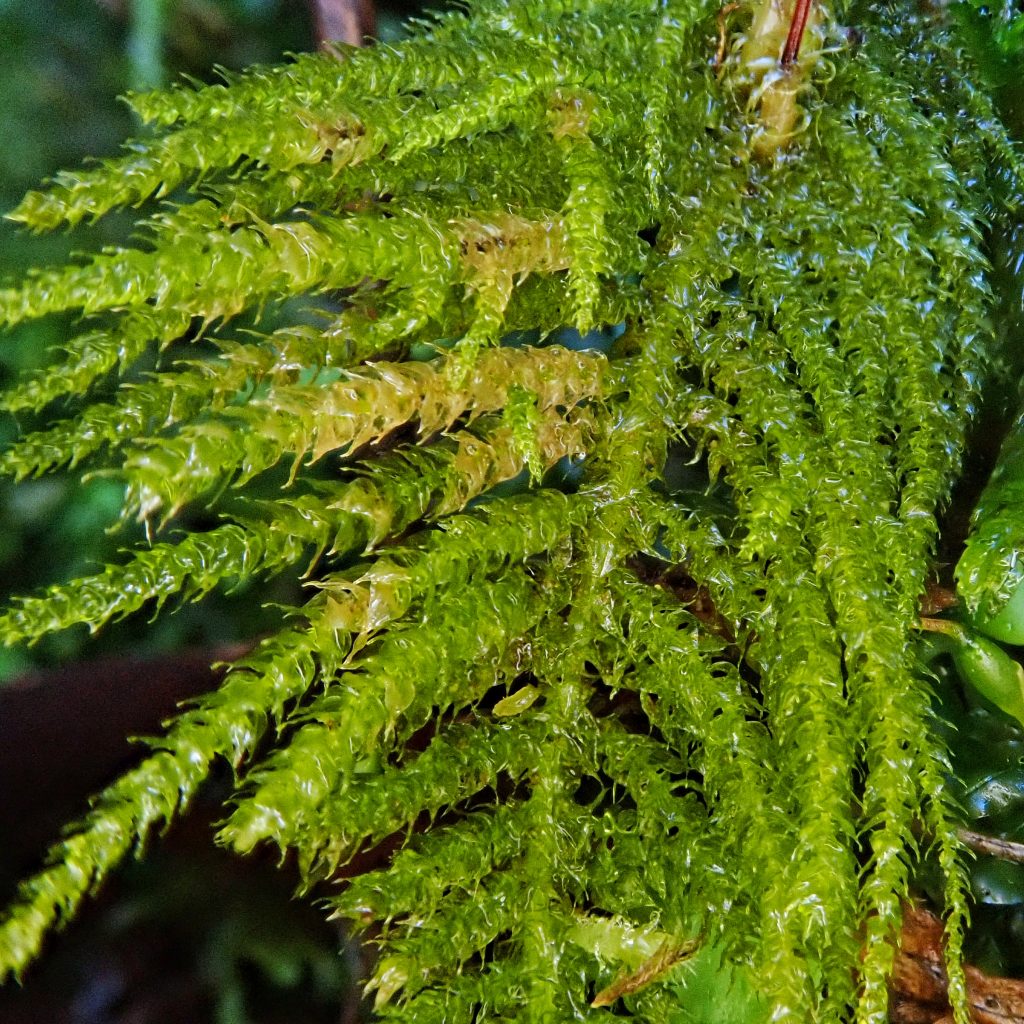
Beautiful photos, Thanks:)
Thank you, Sandra!
Your photo of the calyptra is gorgeous!